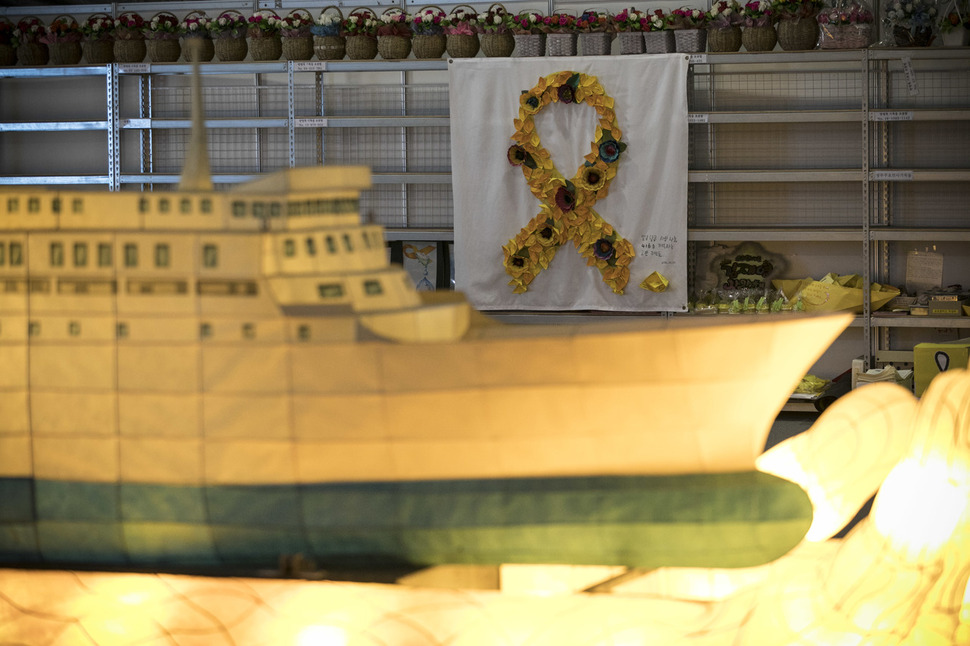 |
|
Yu Gyeong-geun, chair of the executive committee of the Association of Families of the Victims of the Sewol Ferry Tragedy, shares his thoughts after winning his lawsuit against the shipping company Chonghaejin Marine at Seoul Central District Court on July 19. (Shin So-young, staff photographer)
|
Ruling expected to spark controversy for lack of calls for government responsibility
For the first time, a South Korean court has concluded that the government broke the law in connection with the tragic sinking of the Sewol ferry and ordered the government to pay damages to the family members of those who died in that accident. But the court limited its judgment by finding that the government’s initial response to the accident and its failure to rescue the victims were not unlawful. On July 19, Hon. Lee Sang-hyeon, chief judge of the 30th civil law division at the Seoul Central District Court, found in favor of the plaintiffs in a lawsuit asking for damages from the government and Chonghaejin Marine. The plaintiffs consist of the bereaved family members of 117 students at Danwon High School and two other passengers who died during the Sewol accident in Apr. 2014. “It is clear that the victims lost their lives because the executives of Chonghaejin Marine launched the ferry while it was overloaded with cargo that had not been properly secured and because the captain and crew of the Sewol abandoned ship without taking any measures to rescue the passengers. Cheonghaejin Marine must be held responsible for paying damages to the plaintiffs because the illegal action of its executives took place while they were carrying out the company’s work,” the court said. But the court did not recognize most of the allegations about the state’s responsibility for the Sewol accident. The only public servant who was blamed by the court was Kim Gyeong-il, the captain of a Mokpo Coast Guard patrol boat called the 123 who was sentenced to three years in prison for manslaughter on the job. “The captain of the 123 patrol boat had the duty to protect lives by taking quick action to evacuate the passengers from the ship, and by failing to do so violated his duty to be alert on the job. The Republic of Korea is responsible for compensating the plaintiffs for the damages suffered because of the illegal action committed by the captain while performing his duty,” the court said. No responsibility demanded of larger national organizations The court did not accept the argument of the victims’ families that there were other instances of illegal behavior on the job, including the failure of the Vessel Traffic Services Center on Jindo Island to control traffic, the poor oversight by the rescue headquarters, the marine rescue team’s decision not to enter the ship and the dysfunction of the national disaster control tower. “These cannot be regarded as illegal, nor can they be seen as bearing a causal relationship with the victims’ deaths,” the court said. The court’s ruling is expected to spark controversy. After the trial, Yu Gyeong-geun, chair of the executive committee of the Association of Families of the Victims of the Sewol Ferry Tragedy, announced that the association had “initiated legal proceedings asking for damages with the goal of identifying the causes of the tragedy and specifying the government’s and the company’s legal responsibility.” The court ordered the payment of emotional distress damages worth 200 million won (US$176,121) per victim and between 5 and 80 million per family member, along with the victims’ expected income. This figure is higher than the 100 million won (US$88,060) recommended by the Sewol Tragedy Compensation Review Board, which created controversy by applying the standards of traffic accidents. The decision appears to defer to a 2016 ruling by the Supreme Court that set 200 million won as the basic compensation for emotional distress in major disasters.
 |
|
Inside the memorial for the Sewol victims at Ansan, Gyeonggi Province. (Kim Seong-gwang, staff photographer)
|







